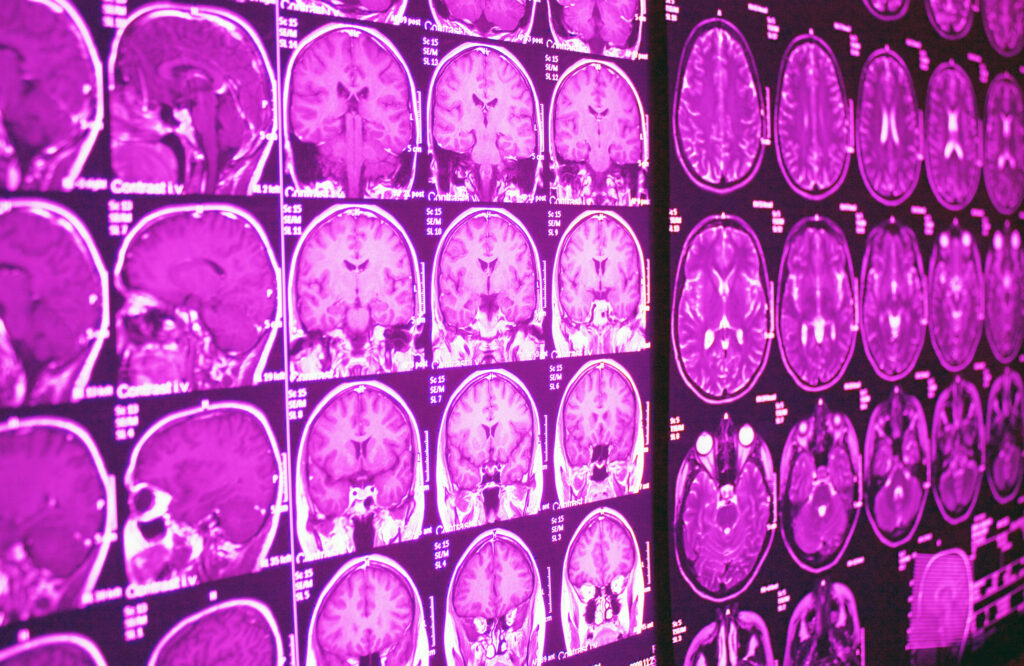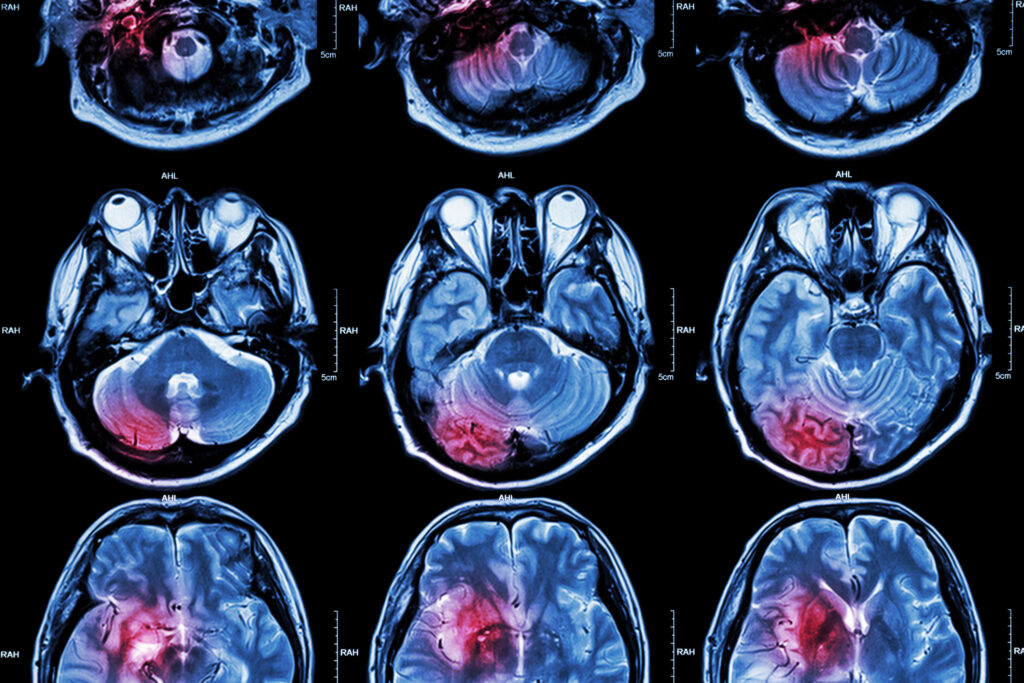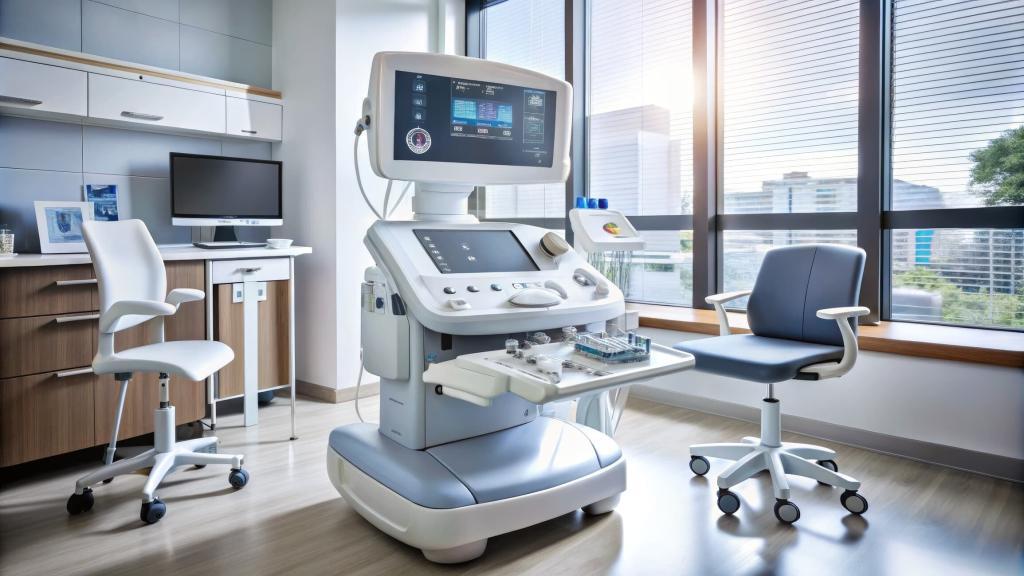Summary: Medical mobile scanners have revolutionised healthcare delivery by providing portable diagnostic tools that bring medical imaging to patients in remote or underserved areas. This article explores the types, advantages, limitations, and future prospects of mobile scanners. It highlights their importance in emergency response, resource-limited environments, and their potential for enhancing patient outcomes through point-of-care diagnostics.
Introduction to Medical Mobile Scanners
In the evolving field of medical diagnostics, mobile medical scanners represent a significant leap in technology, allowing for on-the-go imaging and diagnostics across various settings. These portable devices are invaluable in situations where fixed imaging systems, such as those found in hospitals, are inaccessible. By enabling healthcare providers to bring diagnostic imaging directly to patients, medical mobile scanners have broadened the scope of patient care, particularly in emergency, rural, and remote locations.
Types of Medical Mobile Scanners
Several types of medical mobile scanners have been developed, each suited to different diagnostic needs. The primary types include:
- Portable Ultrasound Scanners:
Portable ultrasound scanners are among the most widely used mobile imaging devices. They are lightweight, versatile, and provide real-time images that assist in diagnosing a range of conditions, from abdominal pain to vascular diseases. Handheld devices have now made ultrasound imaging possible in ambulances, rural clinics, and even in patient homes. - Mobile CT Scanners:
Mobile CT (Computed Tomography) scanners are more complex due to their need for advanced technology and power requirements. However, mobile units equipped with CT scanners have been developed, particularly useful for trauma and emergency settings. They can quickly assess head injuries or internal bleeding, making them crucial in life-threatening situations. - Portable MRI Scanners:
Magnetic Resonance Imaging (MRI) is often seen as a complex, immovable technology, yet portable MRI scanners are now emerging. These devices are lower in power and have limited resolution compared to full-sized MRIs, but they are proving valuable for certain neurological applications in remote or intensive care settings. - Mobile X-Ray Units:
X-ray machines have historically been large and stationary, but portable X-ray devices have become more common, particularly in environments such as nursing homes and field hospitals. They are used to assess fractures, chest infections, and other conditions where imaging is required but patient movement is restricted. - PET and SPECT Scanners:
Positron Emission Tomography (PET) and Single Photon Emission Computed Tomography (SPECT) are advanced nuclear imaging techniques generally performed in specialised facilities. Recent advancements are exploring mobile units for PET and SPECT, particularly to aid in cancer diagnostics and neurological assessments in remote settings.
Key Advantages of Medical Mobile Scanners
Medical mobile scanners offer several unique advantages over their traditional, stationary counterparts:
- Enhanced Accessibility:
Mobile scanners bridge the gap for patients in remote, rural, or underserved areas, offering diagnostic imaging capabilities that were previously unavailable without travelling long distances. This accessibility helps in the early detection and treatment of diseases, which is critical in improving health outcomes. - Faster Diagnosis in Emergency Situations:
In emergency situations, every minute counts. Mobile scanners can be deployed at the scene of an accident or disaster, enabling rapid diagnosis and treatment planning. For instance, portable ultrasound scanners can quickly determine internal bleeding or organ damage, facilitating immediate medical intervention. - Reduction in Patient Movement:
For patients with limited mobility, such as those in intensive care units, mobile scanners eliminate the need for transportation to imaging departments. This reduces stress for the patient and minimises the risk of further injury, particularly in cases of severe trauma or instability. - Cost-Effectiveness for Small Facilities:
Not all healthcare facilities, especially smaller clinics or rural hospitals, can afford full-scale imaging setups. Mobile scanners present a more affordable alternative, allowing these facilities to provide essential diagnostic services without major infrastructural investment. - Increased Efficiency in Point-of-Care Diagnostics:
Mobile scanners support point-of-care testing, meaning that healthcare providers can use them immediately where care is provided. This efficiency reduces patient waiting times, enhances the speed of diagnosis, and contributes to more streamlined workflows within healthcare facilities.
Limitations and Challenges
While mobile scanners provide numerous benefits, they also come with limitations that affect their usability and diagnostic scope:
- Image Quality and Resolution:
Mobile scanners, particularly portable ultrasound and MRI devices, often have lower resolution compared to standard hospital equipment. This can affect diagnostic accuracy, especially for complex or detailed imaging requirements, which may still require traditional stationary equipment. - Power Requirements and Battery Life:
Mobile medical scanners, especially CT and MRI, demand significant power, which limits their use in settings without adequate electrical infrastructure. Battery life can be another constraint, necessitating frequent recharging or reliance on a stable power source. - Cost and Maintenance:
While mobile scanners are cost-effective for facilities unable to afford full-size machines, they can still be expensive, particularly advanced models like portable CT and MRI. Moreover, these devices require regular maintenance and calibration to ensure diagnostic accuracy. - Operator Expertise and Training:
Operating mobile imaging devices requires specialised training. In remote areas where medical staff may have limited experience with imaging equipment, training becomes essential to ensure that scans are conducted properly and images are interpreted accurately. - Regulatory and Safety Concerns:
Mobile scanners, particularly those involving radiation (like X-rays and CT scans), require adherence to safety regulations. Ensuring the safe operation of these devices, especially in non-hospital environments, involves strict regulatory compliance, adding complexity to their deployment.
Applications of Medical Mobile Scanners
Medical mobile scanners are highly versatile and have applications across various healthcare domains:
- Emergency and Disaster Response:
Mobile imaging devices are invaluable in disaster zones where traditional healthcare infrastructure may be compromised. In situations such as earthquakes, floods, or conflict zones, mobile scanners help quickly assess and triage injuries, allowing for rapid decision-making in high-pressure environments. - Rural and Remote Healthcare:
In rural or geographically isolated regions, access to advanced medical imaging is often limited. Mobile scanners enable healthcare providers to deliver essential diagnostic services to populations that would otherwise lack access, improving overall healthcare equity. - Military and Field Hospitals:
Mobile scanners have been widely adopted by military medical teams to provide immediate diagnostics in field hospitals. This capability ensures that soldiers and personnel receive timely care, with the possibility of onsite evaluation and treatment planning in conflict zones. - Home Healthcare and Outpatient Services:
For patients who require regular monitoring, such as those with chronic diseases or mobility issues, mobile imaging allows healthcare providers to conduct necessary diagnostics in the patient’s home. This application is especially useful for elderly patients and those receiving palliative care. - Telemedicine and Remote Diagnosis:
Telemedicine has become more prominent, particularly during the COVID-19 pandemic. With mobile imaging devices, healthcare providers can conduct scans remotely and share images with specialists for consultation, bridging the gap between patients and expert care providers regardless of location.
Future Prospects and Technological Advancements
As technology advances, the capabilities and applications of mobile medical scanners are expected to expand further. Key areas of development include:
- Artificial Intelligence Integration:
Artificial intelligence (AI) is increasingly being incorporated into mobile scanners to enhance image quality, automate diagnostic interpretation, and reduce operator dependency. AI algorithms can assist in identifying patterns and anomalies, enabling faster and potentially more accurate diagnoses. - Enhanced Portability and Power Efficiency:
Manufacturers are constantly working to reduce the size and weight of mobile scanners, making them easier to transport and deploy. Advances in battery technology are also helping extend operational time, which is particularly beneficial for remote and emergency applications. - Improved Connectivity and Data Sharing:
The ability to transfer images and data securely over networks enables real-time collaboration between onsite healthcare providers and offsite specialists. Future mobile scanners will likely feature enhanced connectivity for streamlined integration into telemedicine workflows, allowing for more comprehensive care. - New Applications and Expanding Capabilities:
Research is ongoing to expand the capabilities of mobile scanners beyond traditional imaging. For example, mobile scanners are being explored for use in diagnostic ultrasound elastography, which assesses tissue stiffness—a useful tool in liver disease and cancer diagnosis. - Lower Costs and Increased Accessibility:
As technology advances, the costs of mobile scanners are expected to decrease, making them accessible to more healthcare facilities worldwide. This affordability will increase adoption rates, contributing to broader and more equitable access to diagnostic imaging services.
Conclusion
Medical mobile scanners have become indispensable tools in modern healthcare, bringing diagnostic capabilities to settings where they were once unthinkable. By providing accessible, cost-effective, and real-time imaging solutions, mobile scanners are transforming healthcare delivery and improving patient outcomes globally. Though challenges remain—such as image quality limitations and regulatory concerns—the ongoing advancements in mobile scanner technology promise to address these issues and expand the reach of healthcare services. As the technology matures, mobile scanners are likely to become a cornerstone of future healthcare, supporting a more connected, accessible, and patient-centred approach to medical diagnostics.
Disclaimer
The content of this article is provided for informational and educational purposes only and does not constitute medical, professional, or legal advice. While Open Medscience strives to ensure the accuracy and relevance of the information presented, no guarantee is made regarding its completeness or suitability for any specific purpose. Readers are advised to consult qualified healthcare professionals or regulatory authorities for guidance tailored to individual circumstances. The inclusion of any technologies, products, or practices does not imply endorsement by Open Medscience. All information is accurate as of the publication date (2024-11-06) and may be subject to change without notice.




